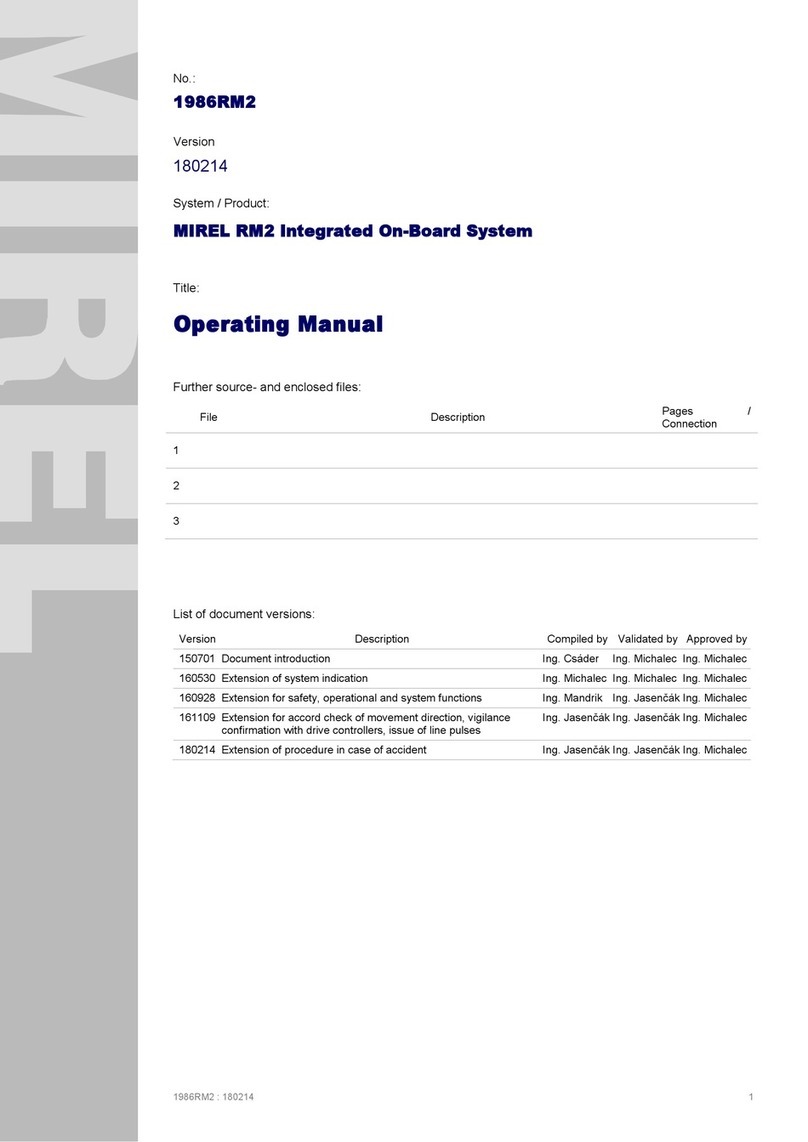Levels D1 and D2 run automatically after switching on the MIREL RM2 Integrated On-Board System. Staff
intervention of staff is required for performance of D1 diagnostic test if the MIREL RM2 Integrated On-
Board System is in modification with vigilance monitoring function. In case of MIREL RM2 Integrated On-
Board System failure detection when running the D1 and D2 test, the staff is notified about such fact and
MIREL RM2 Integrated On-Board System switches itself to a safe status dependent on character of the
detected failure. If the detected failure doesn´t allow further operation of the integrated on-board system, a
measure takes place to prohibit further DRV operation. Based on character of the detected failure, an
operational system repair (S1), eventually a system service repair (S2) must be carried out.
The functional test (D3) of system is usually carried out by a trained employee of the Operator. During the
functional test, the basic system functionality in all operating functions is inspected. Functionality of input-
output circuits, cooperation with main DRV functional units, as well as functionality of indication elements
and keyboards is inspected. In case of failure detection, an operational system repair (S1), eventually a
system service repair (S2) must be carried out.
The prophylactic inspection (D4) of the system is carried out periodically by the producer of integrated on-
board system, or by an authorized and trained subject. Apart from functional test, an in-depth inspection of
the entire system is carried out. Inspection is carried out in terms of full functionality verification and wear
status. Should a connection failure of integrated on-board system to DRV technology be revealed, an
operational repair (S1) is necessary. When an internal failure of the integrated on-board system is detect-
ed, a service repair (S2) is necessary.
System diagnostics within the framework of D3, D4, S1 a S2 is carried out by means of MIREL MAP soft-
ware, which is started on service-PC. Computer connection is effectuated by means of ATM transfer
module and diagnostics cables. Software description is provided in 974MAP and type of employed diag-
nostics cables in 2521M.
Each person performing the diagnostics of integrated on-board system must be instructed in terms of oc-
cupational safety, traceably trained for this activity and must have a verifiable authorization to carry out
individual levels of system diagnostics.




























